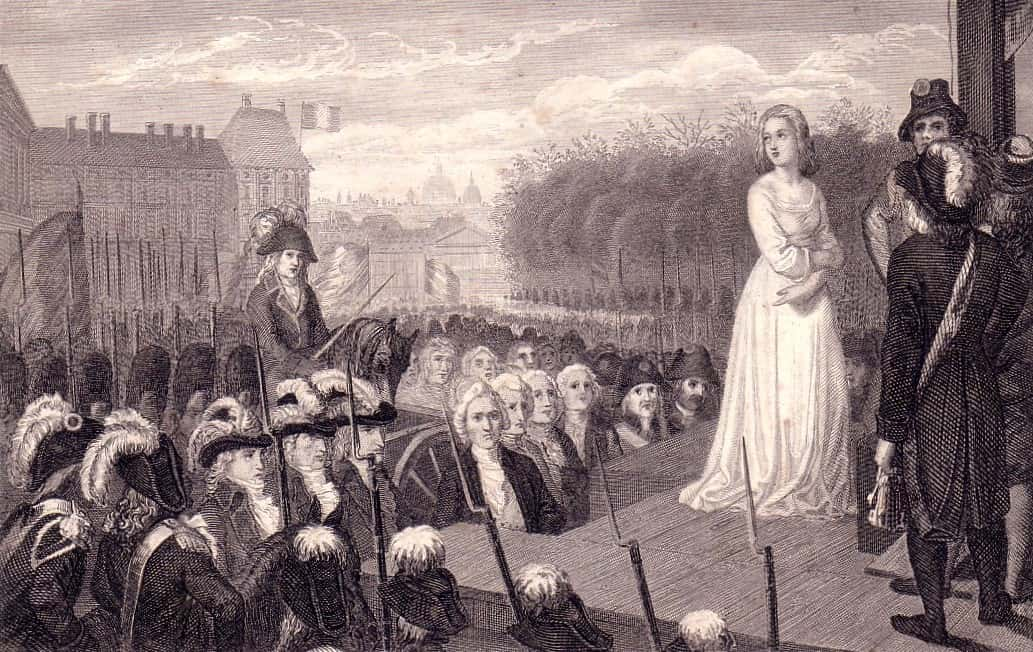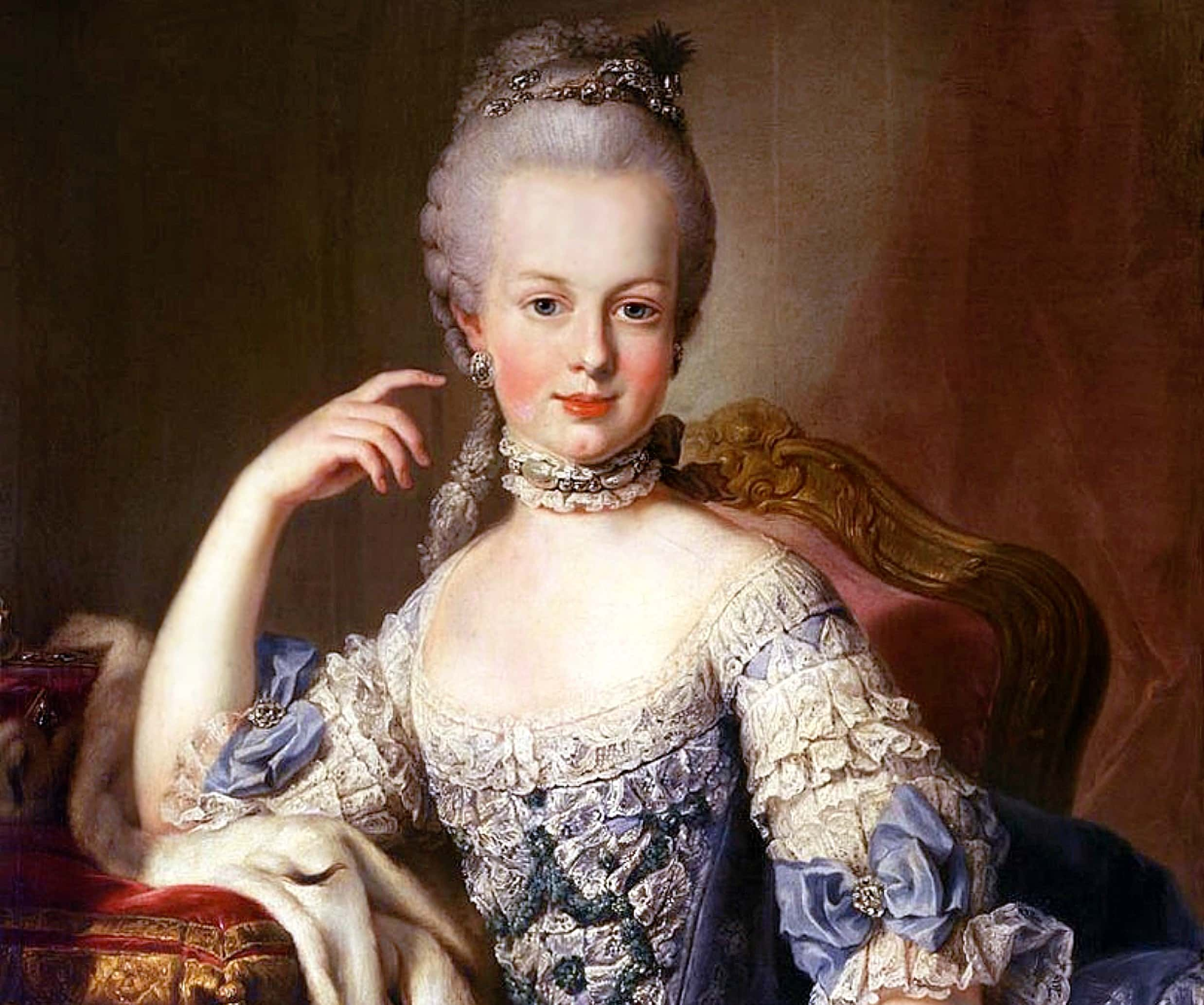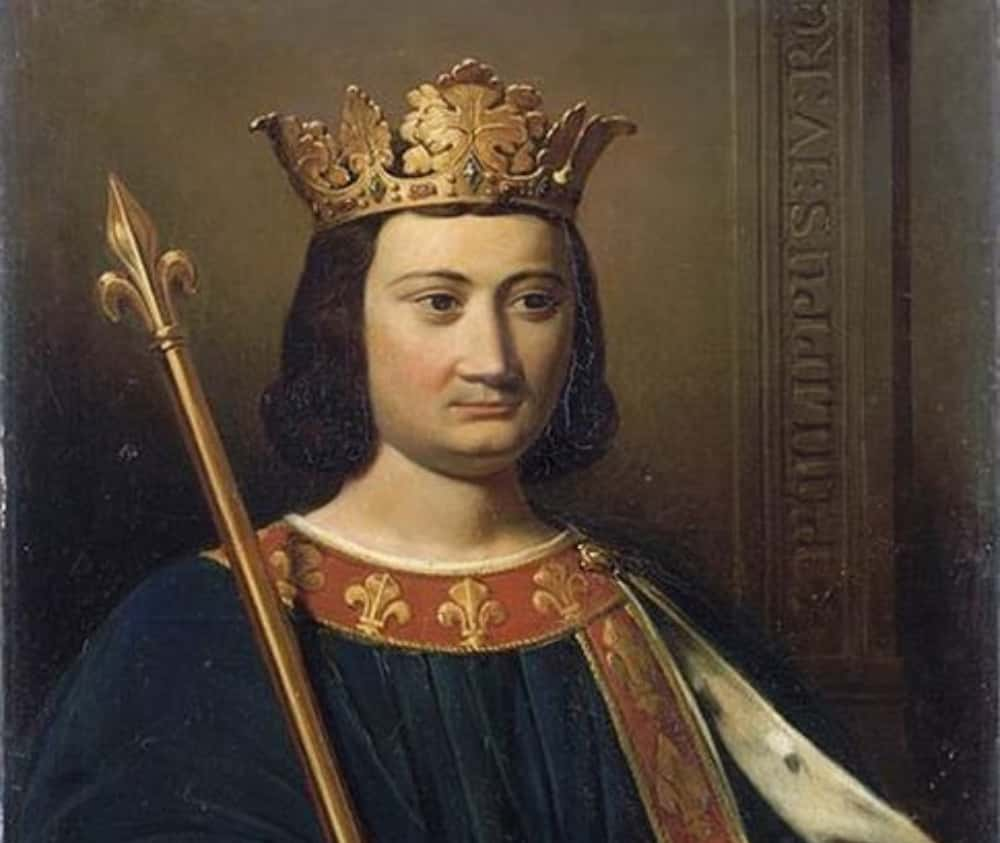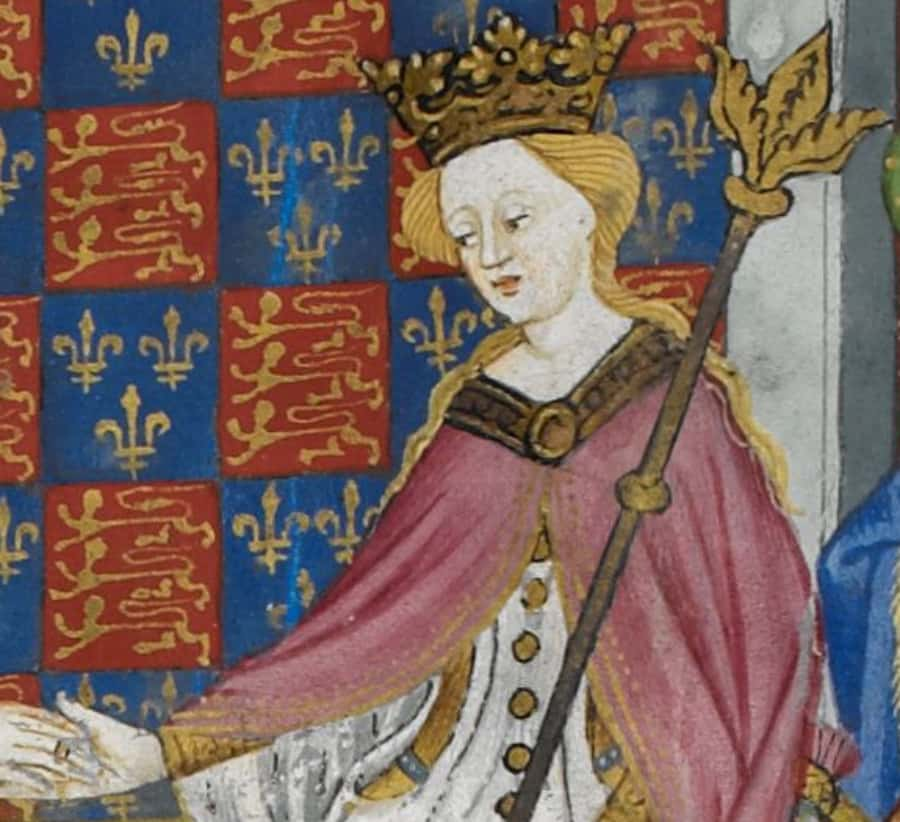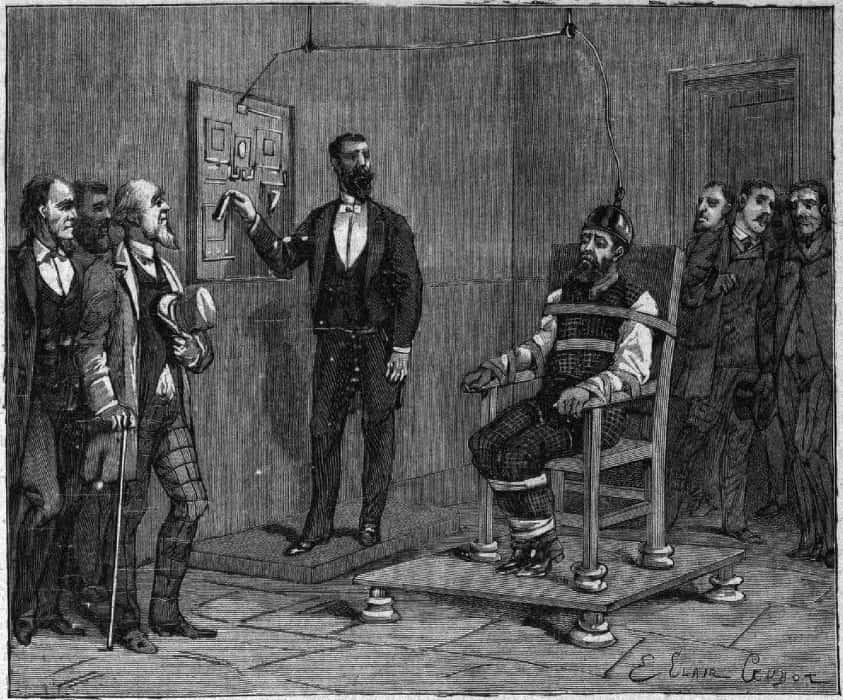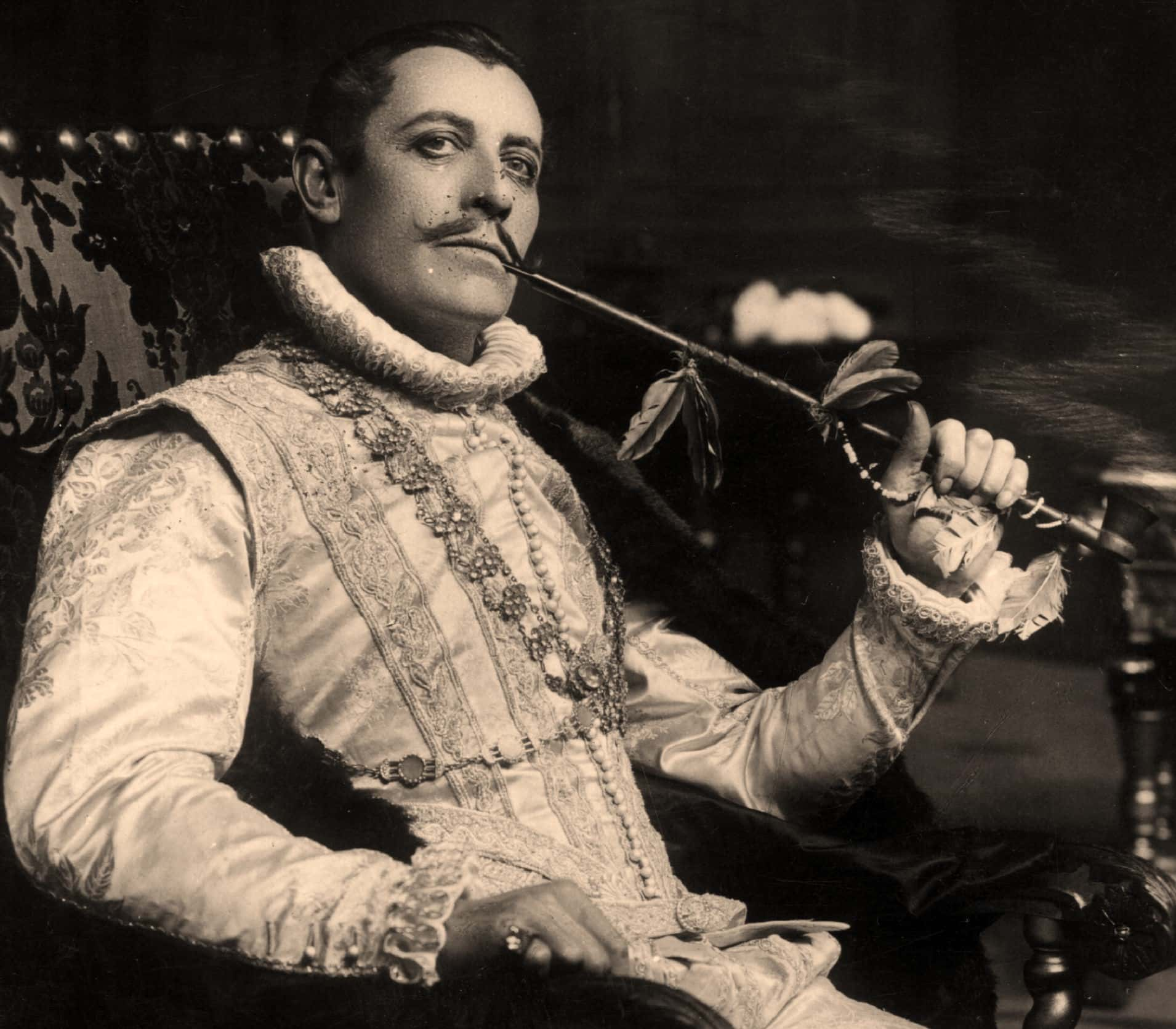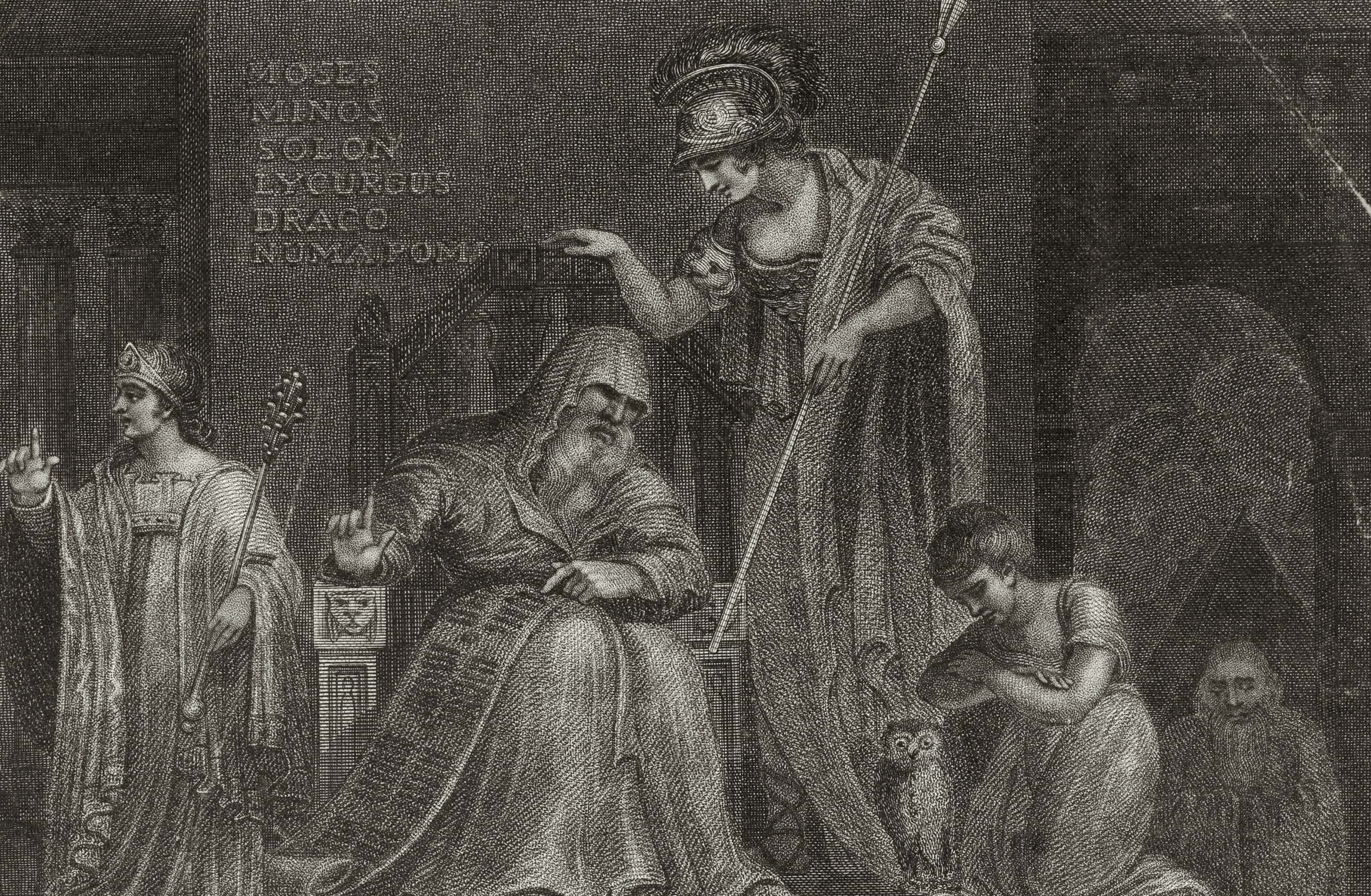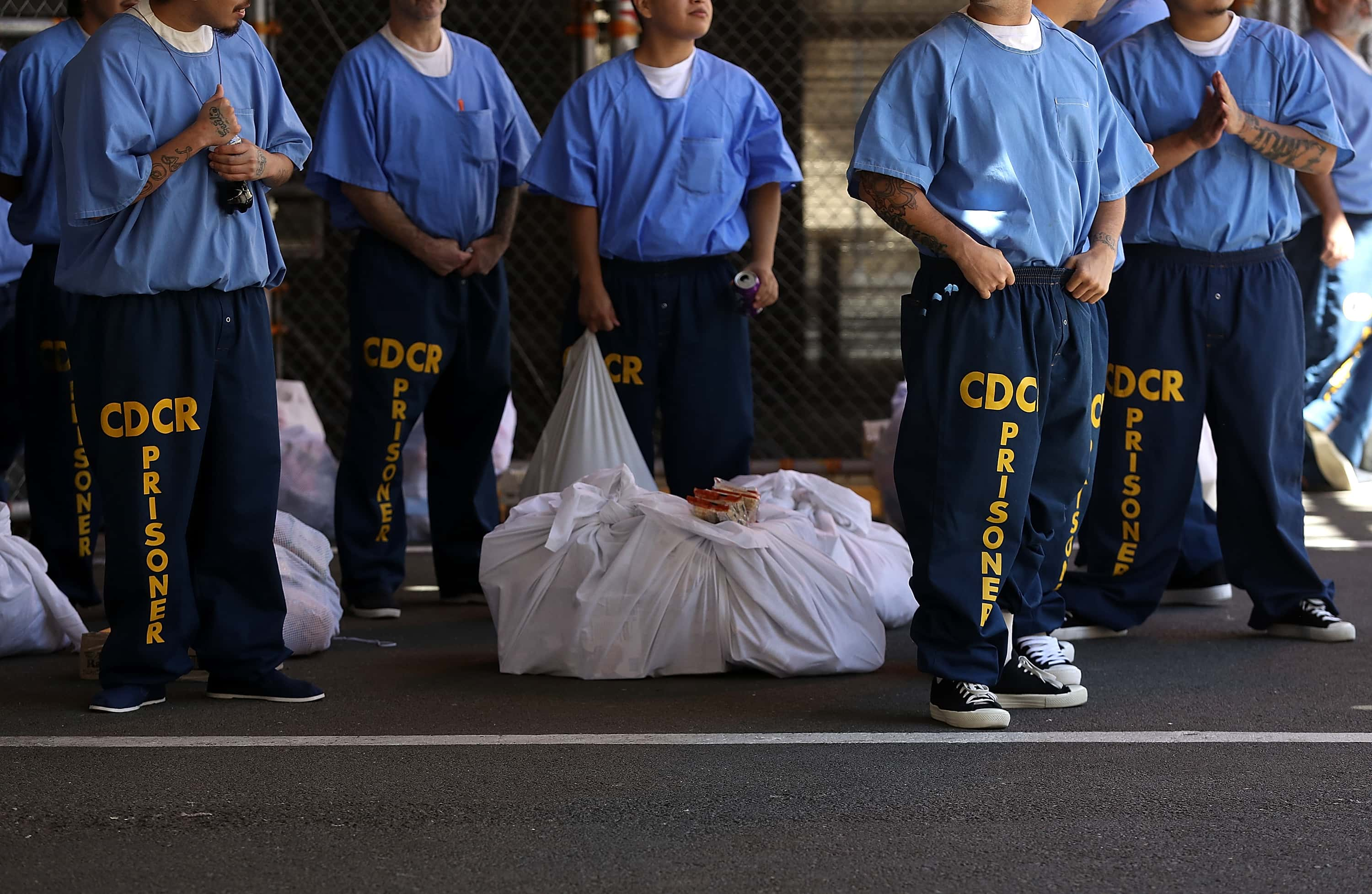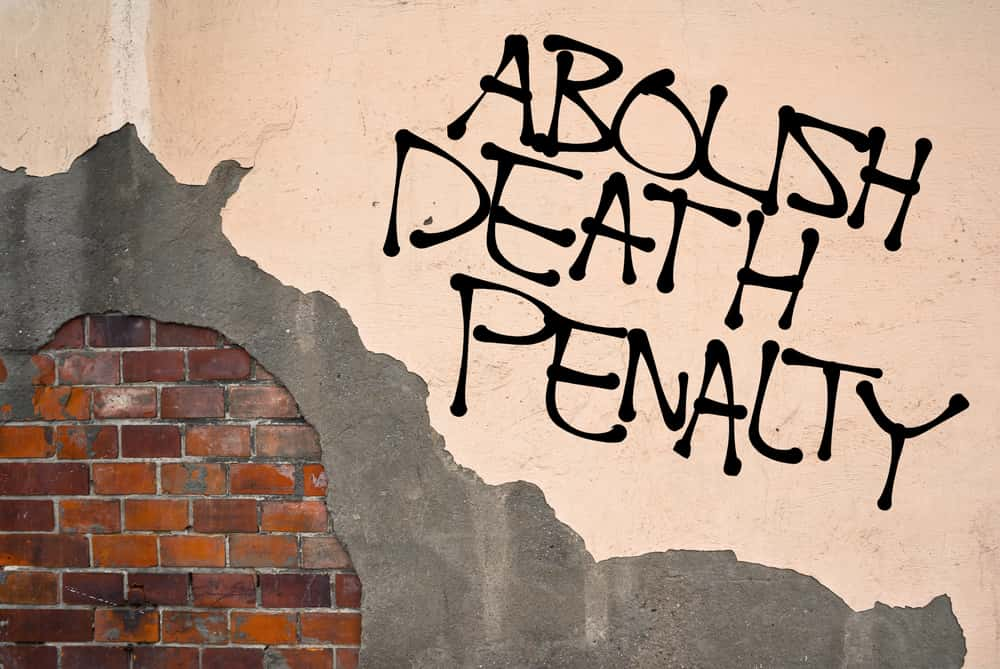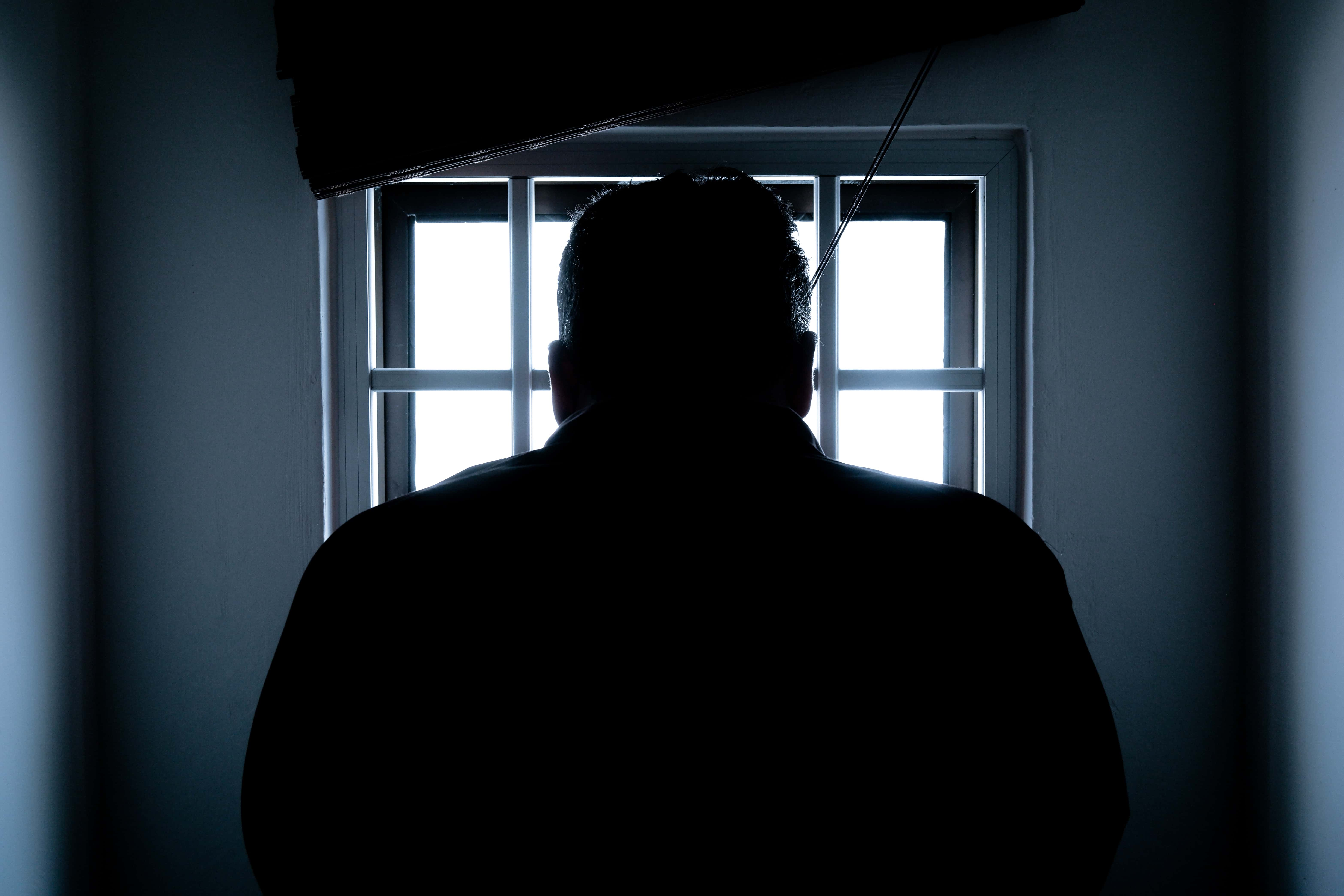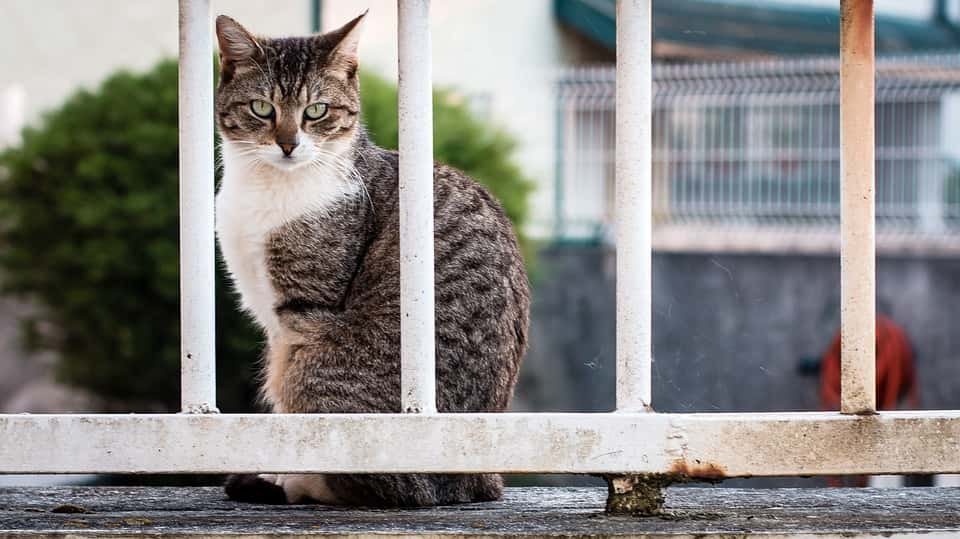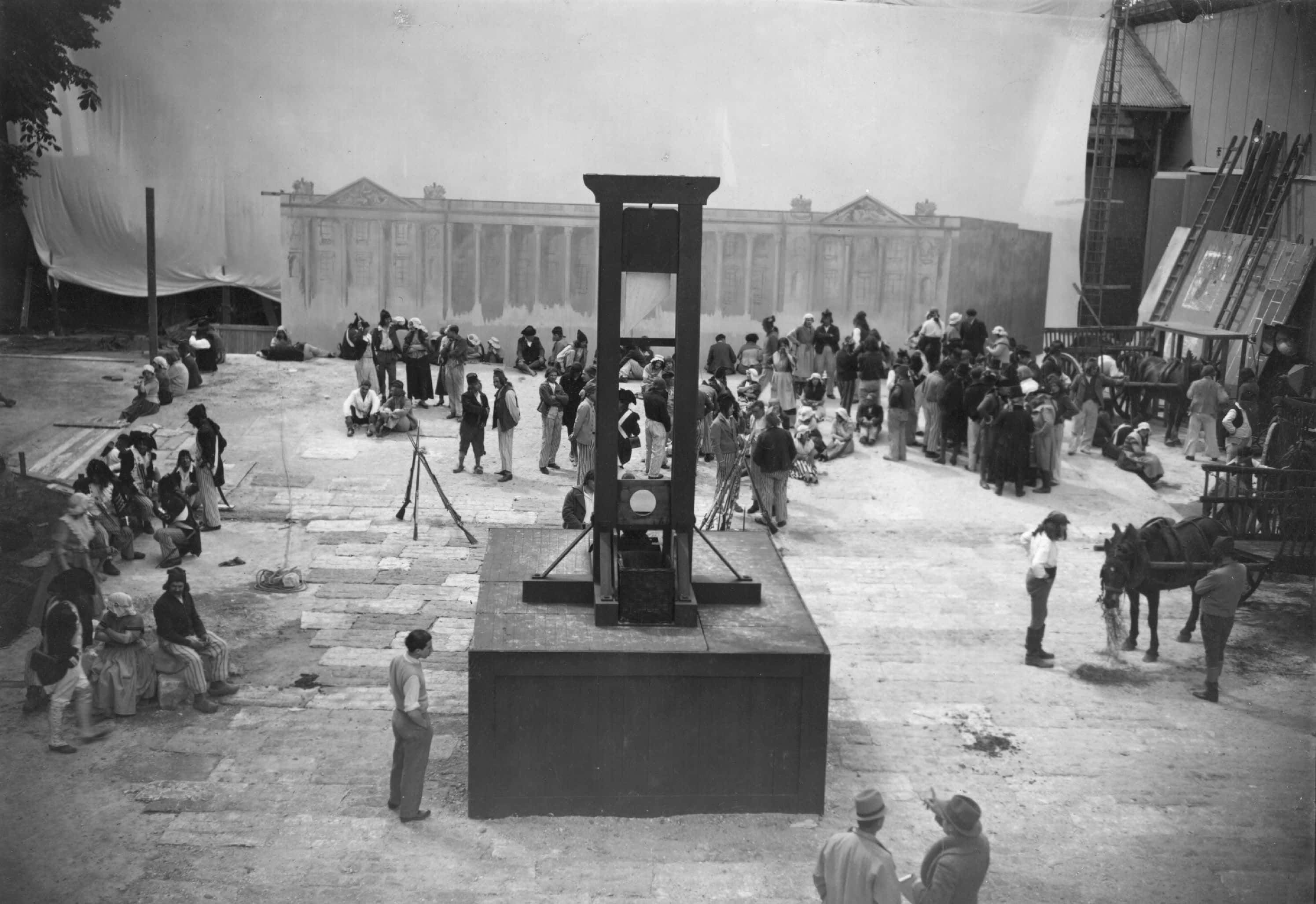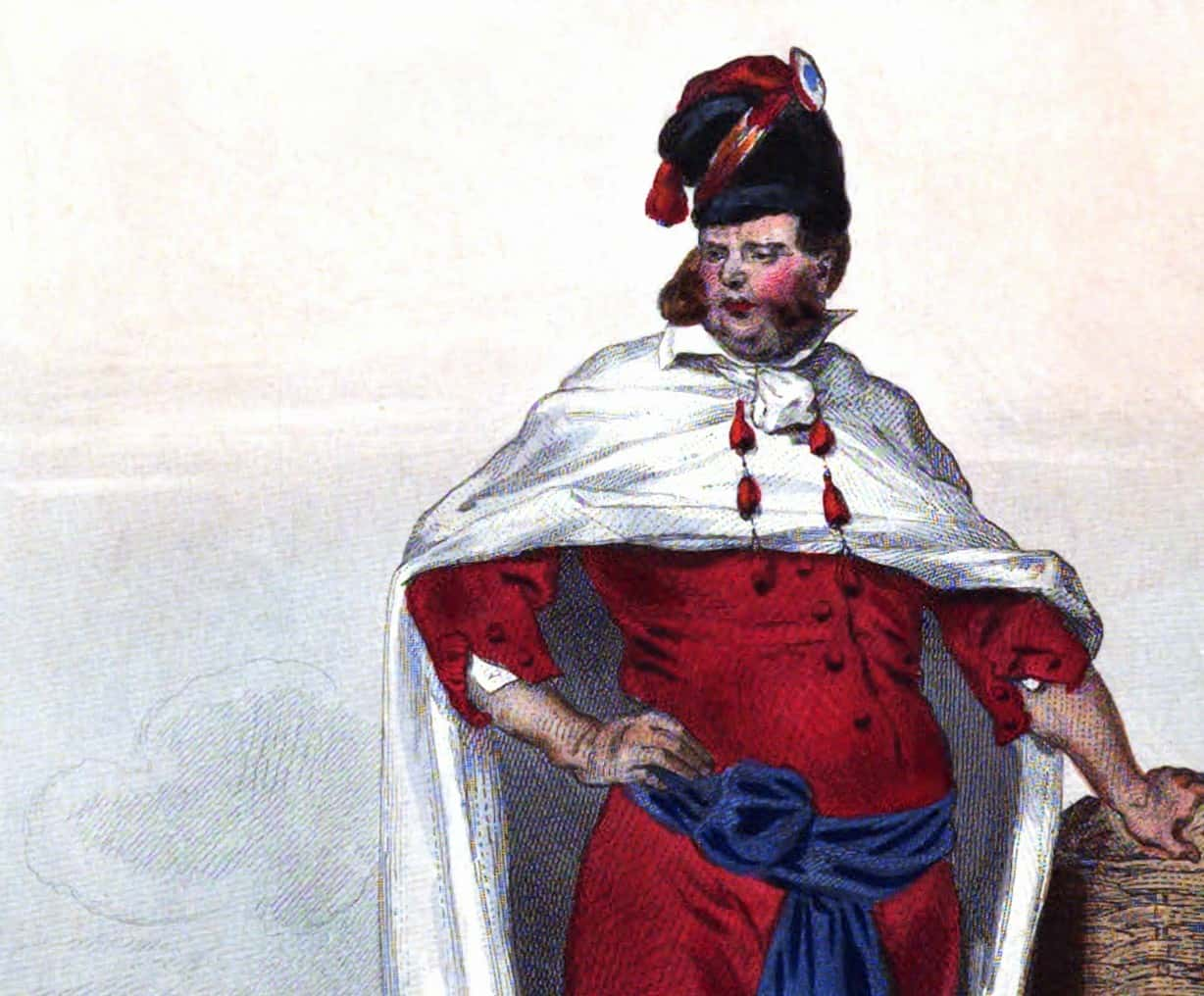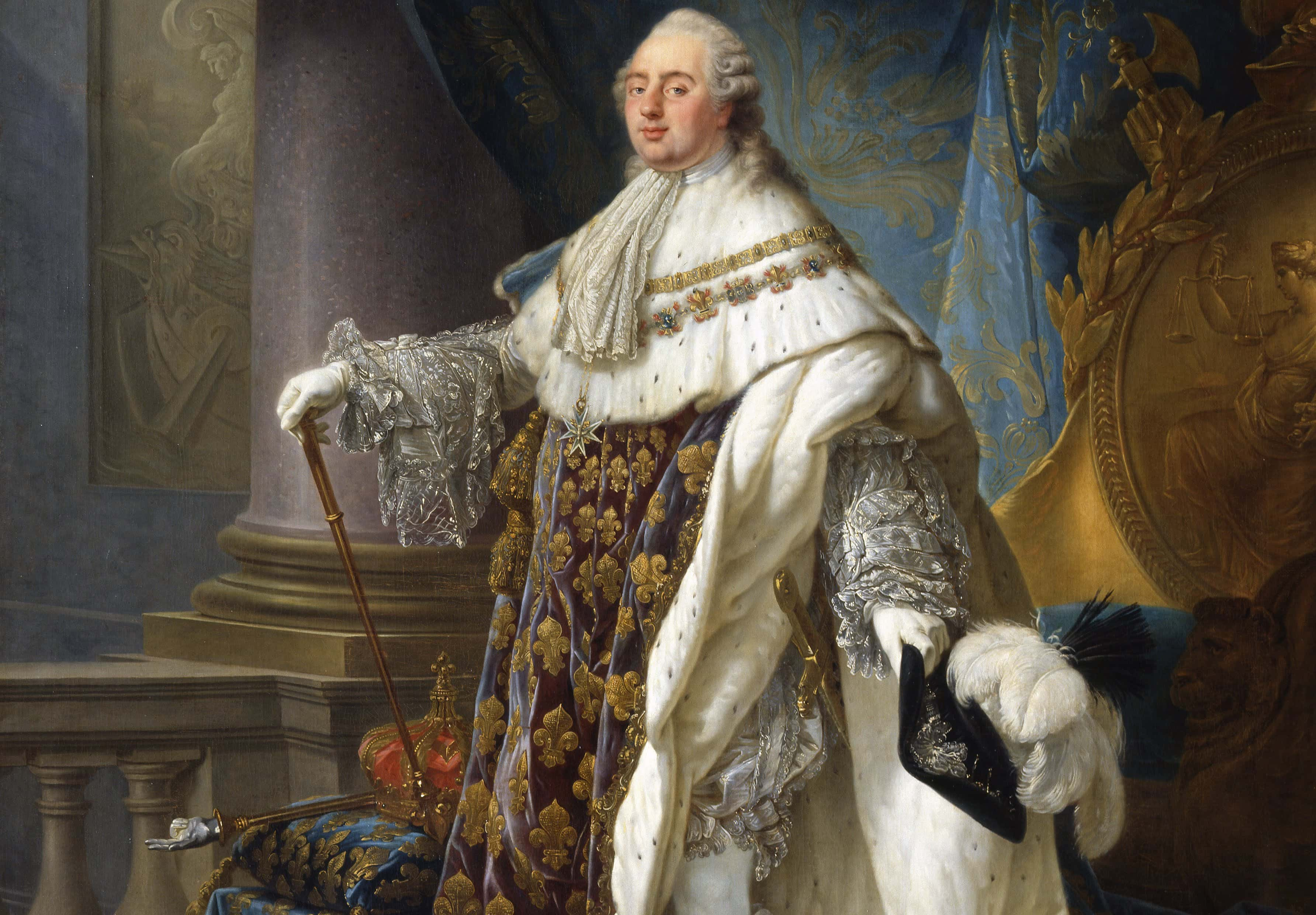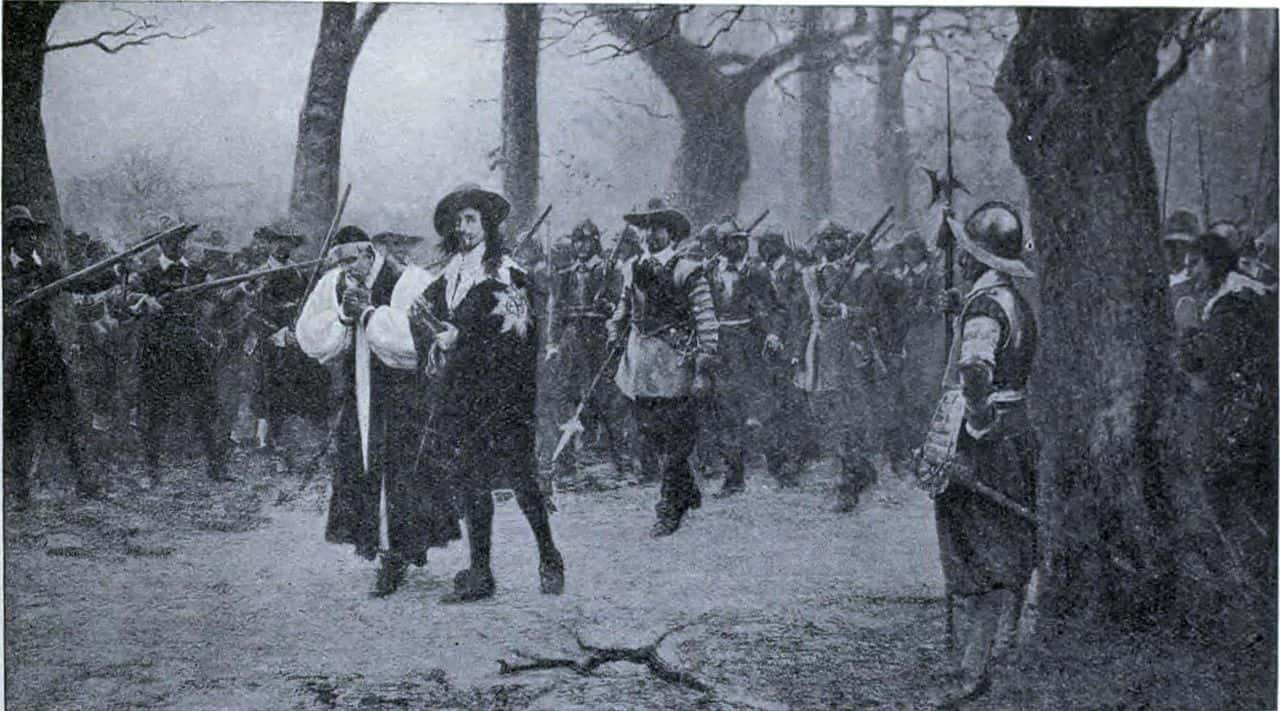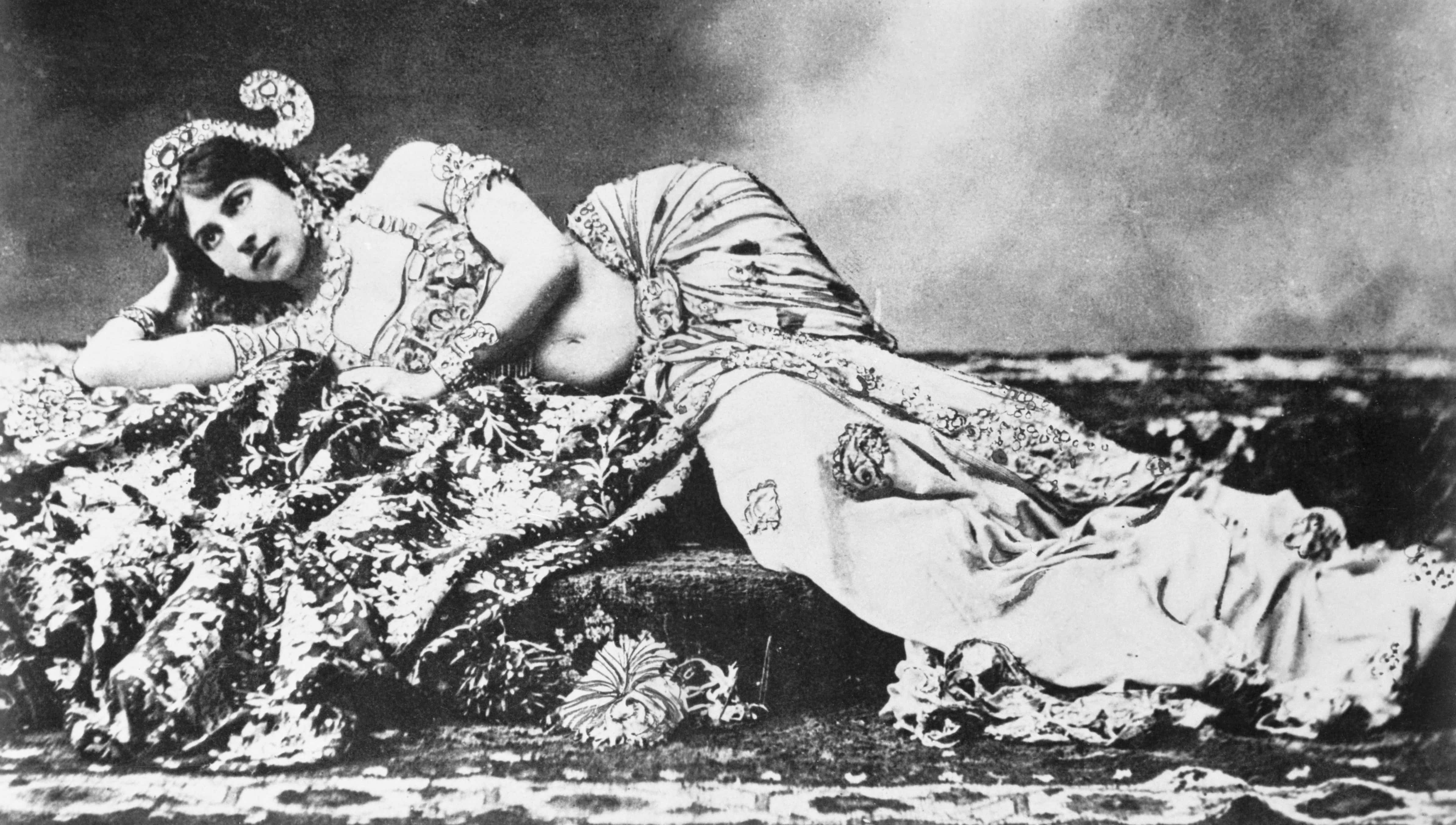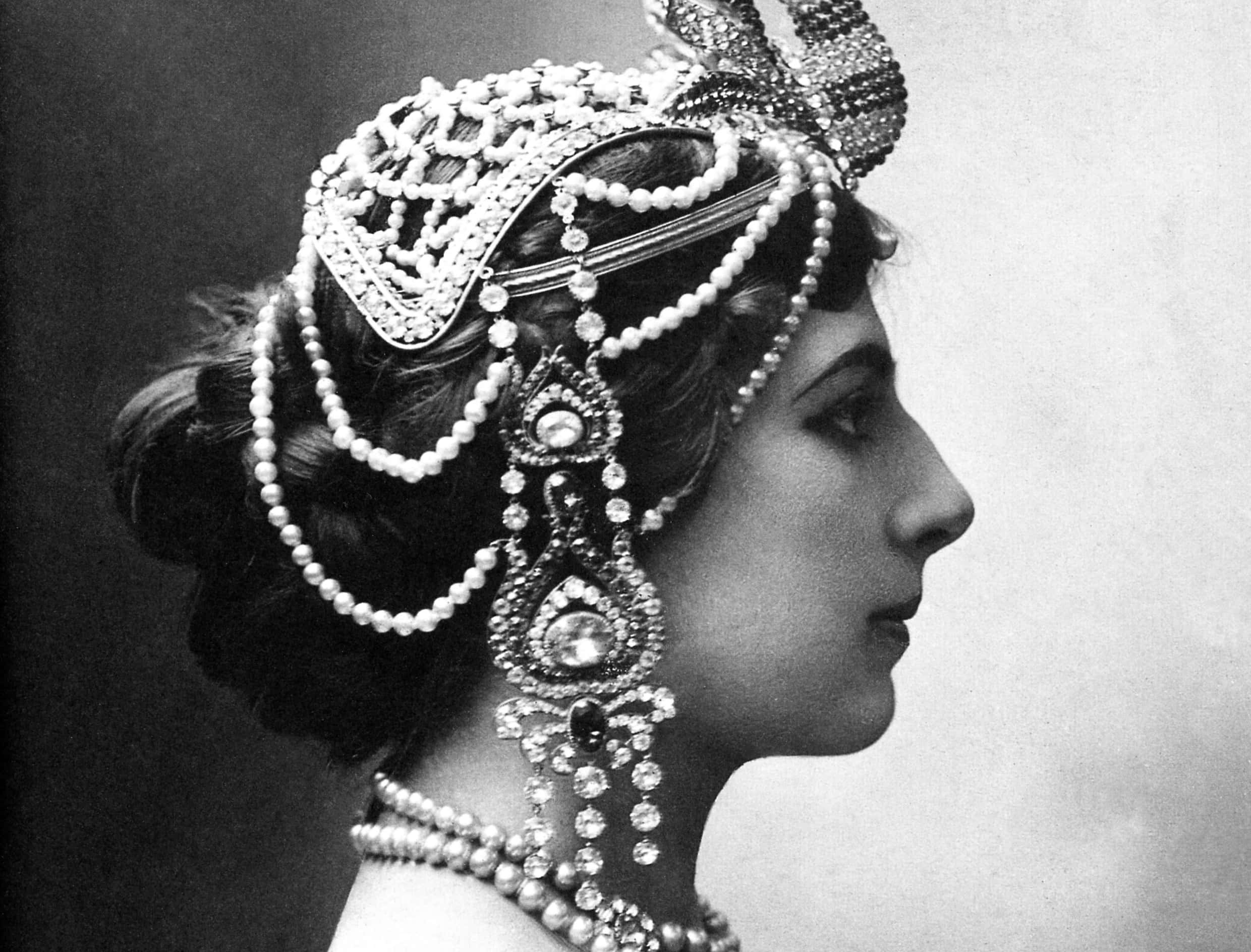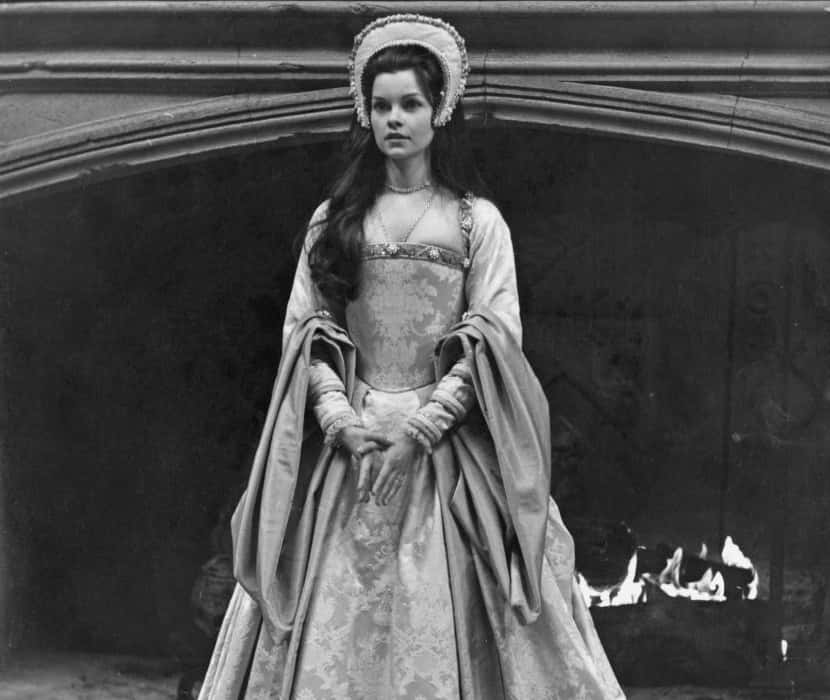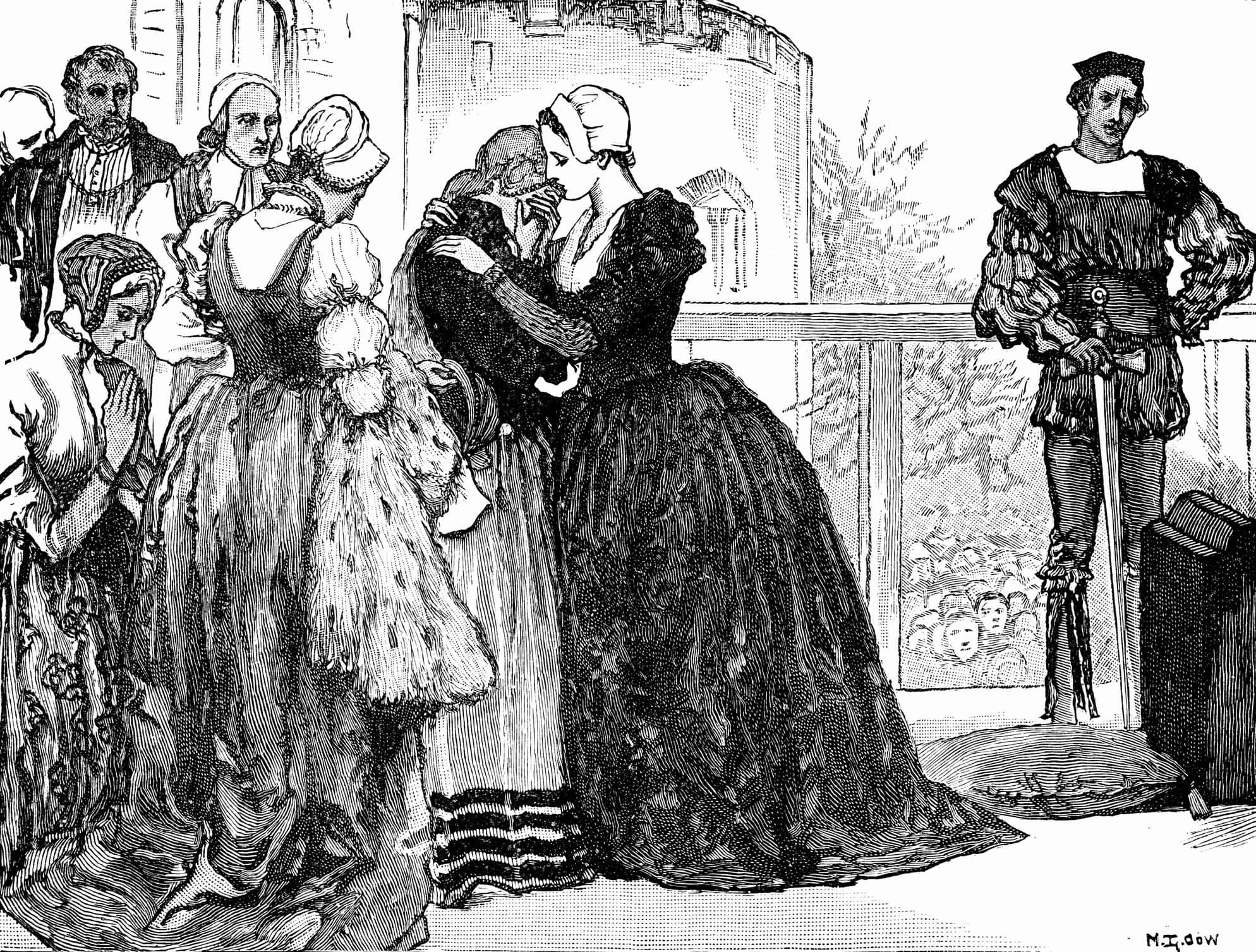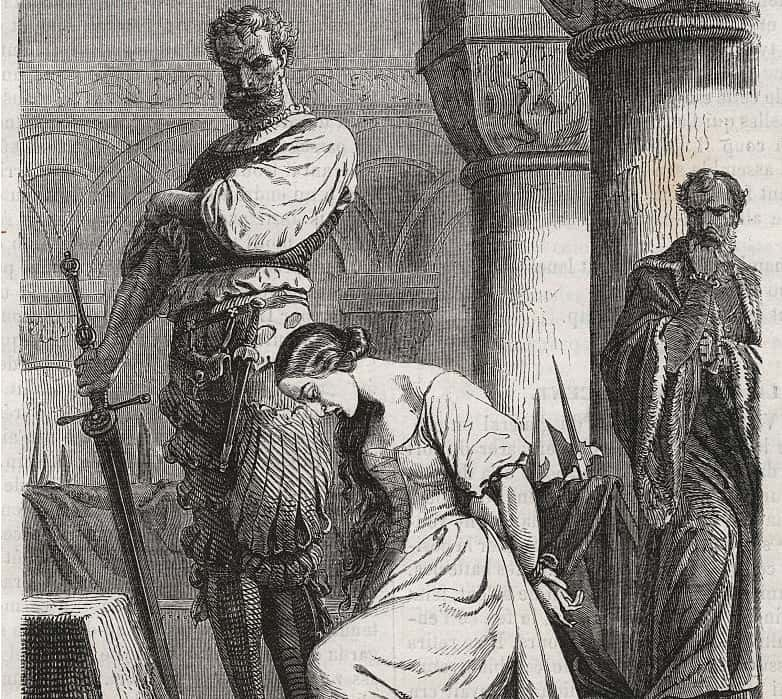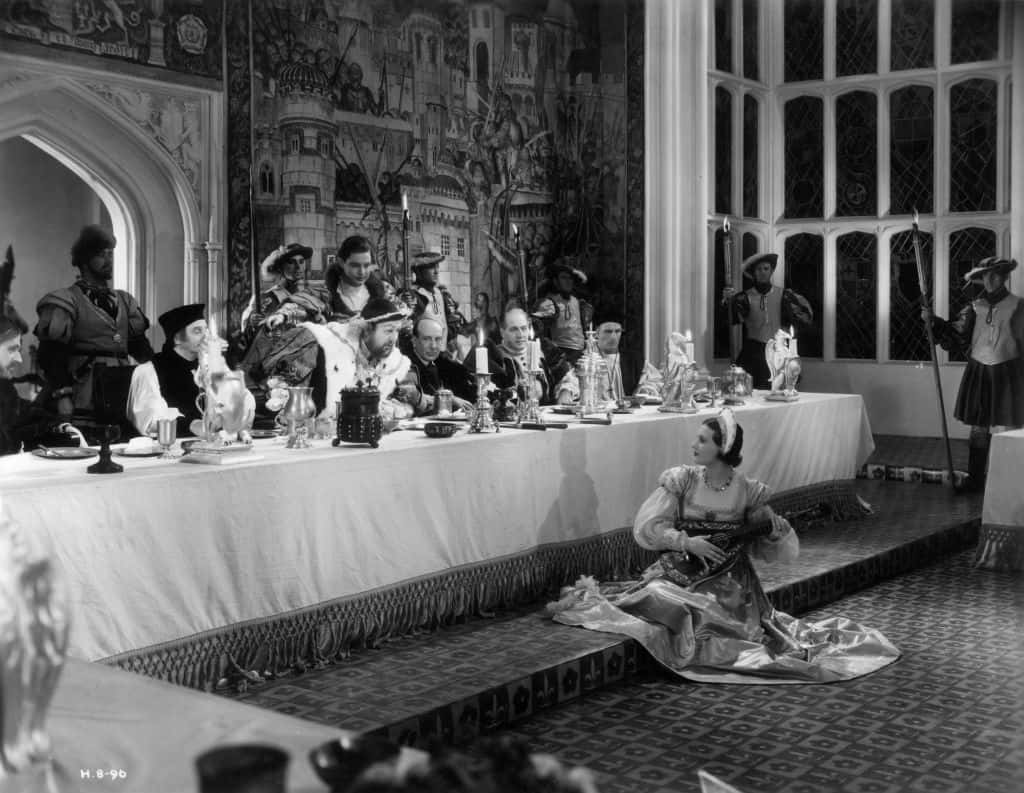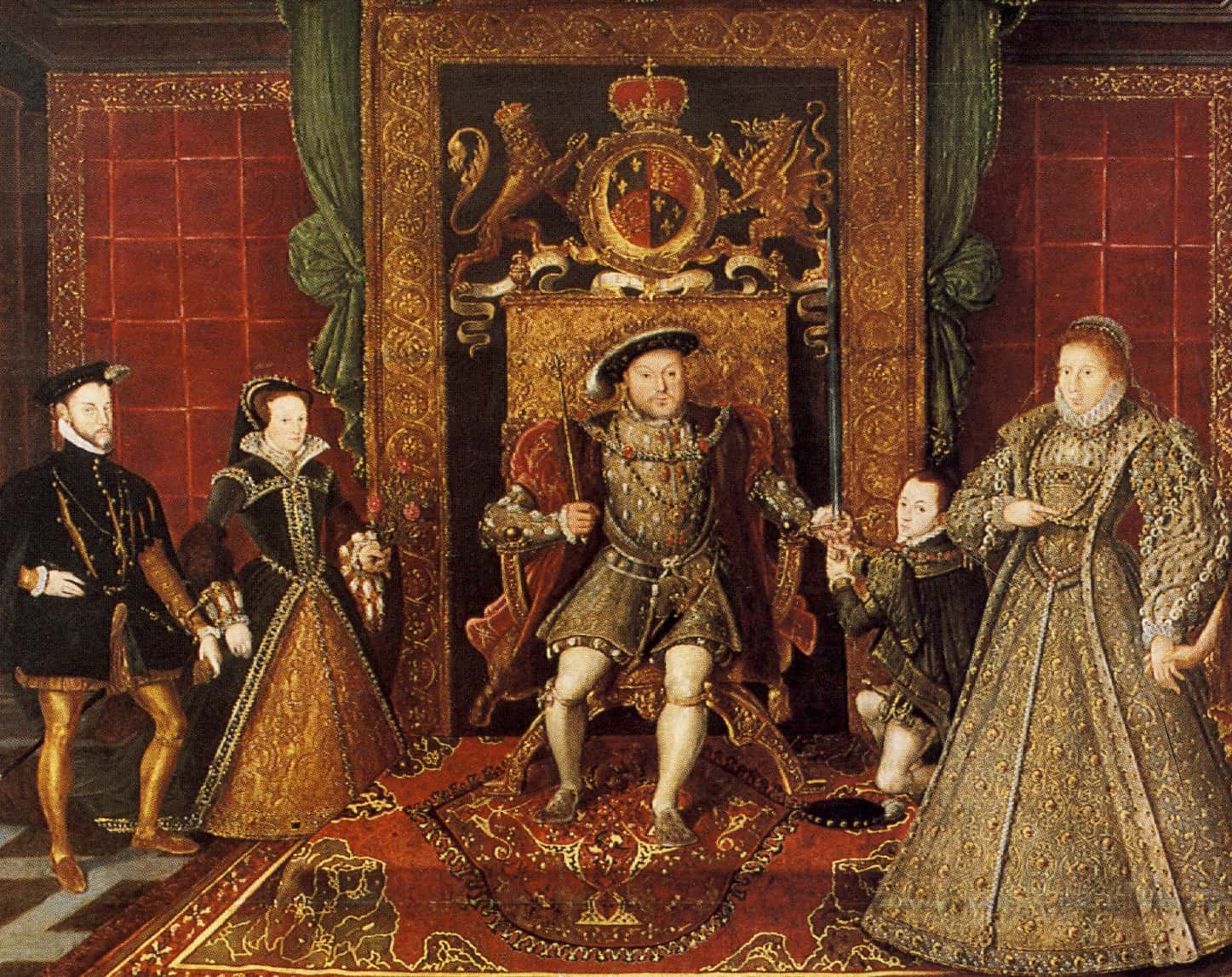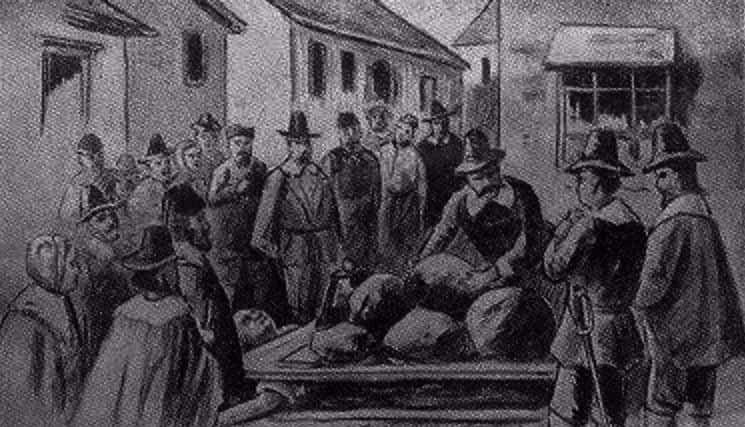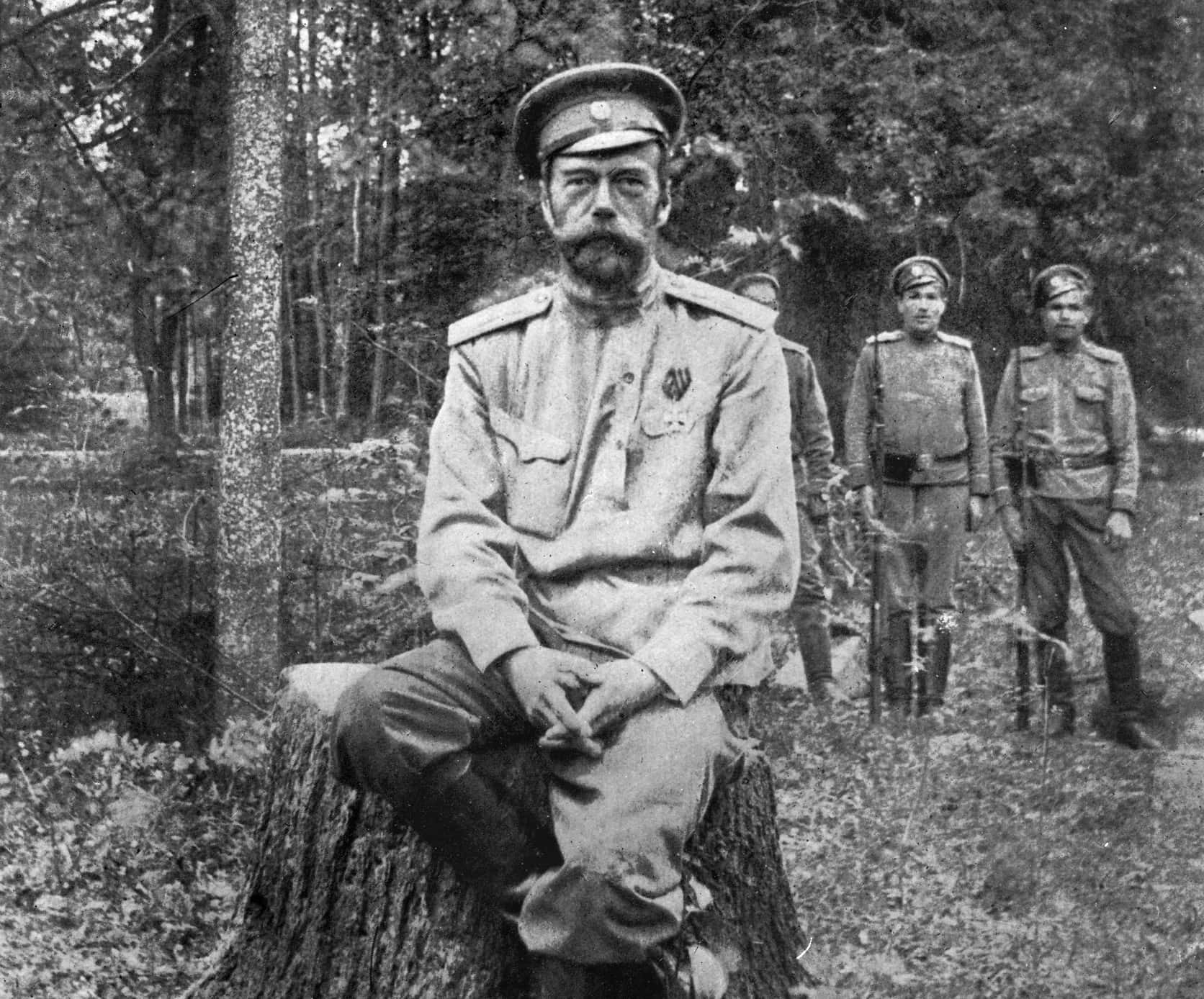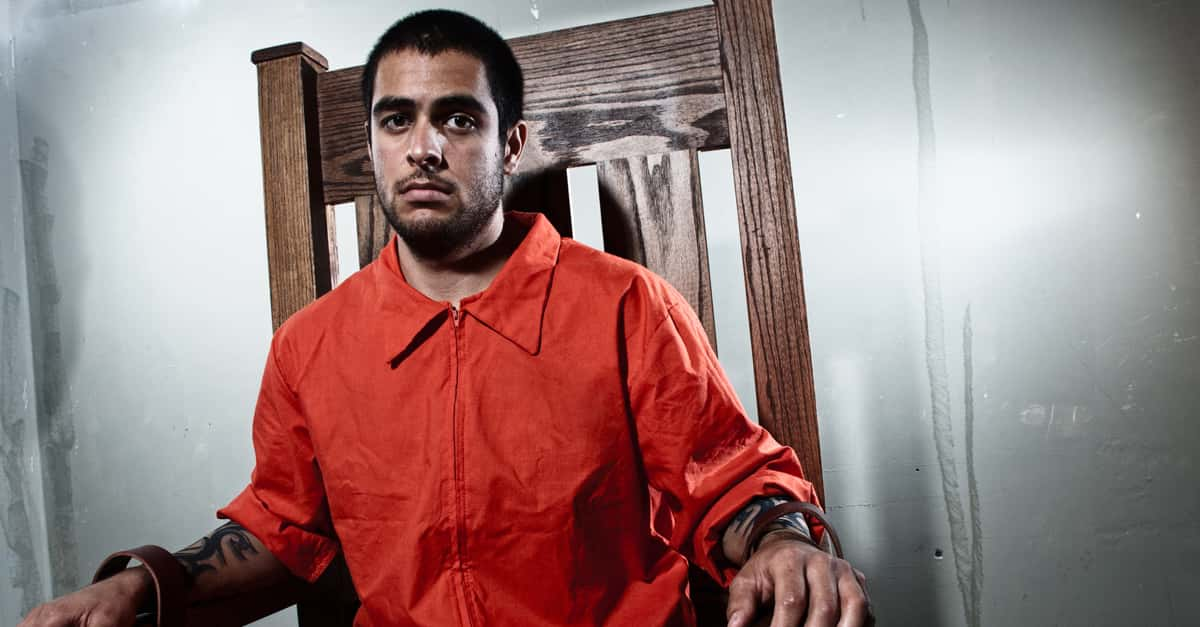Today, capital punishment is a deeply controversial and widely debated topic, but it's undeniable that for centuries, executions have played an integral role in shaping civilizations all over the world. Whether orchestrated by mad kings, frustrated soldiers, or rebellious citizens, there have been countless important executions throughout history. Read on for the gruesome mishaps, shocking surprises, and heartbreaking last words involved in some of the most notable executions ever.
Marie Antoinette Facts
1. Always Be Polite
The famous last words of rulers are sometimes remembered for their eloquence, grandiosity, wisdom, or oddity. For Marie Antoinette, her last words are mostly remembered for their quaint politeness. The last recorded words from the deposed Queen of France before her execution by guillotine in 1793 were to excuse herself to her executioner. She said, “Pardon me, sir, I did not do it on purpose.” A reflection on her lavish spending, lifestyle, and political fortunes? Not quite—she had accidentally stepped on the executioner’s toe.
2. Courage, My Word
Perhaps Marie Antoinette had used up her more inspired words in the moments before her execution. As she was being led to the guillotine, the priest present at the execution told her to have courage. She responded by defiantly saying, "Courage? The moment when my ills are going to end is not the moment when courage is going to fail me."
3. Don’t Play With Certain Friends…
King Philip IV of France, also known as Philip the Fair, maybe wasn't so "fair" after all. When he discovered his three daughters-in-law were having intimate relations with knights from his court, he forced his daughters to stand trial for adultery. Two of the daughters were found guilty. They had their heads shaven and were sentenced to life imprisonment. But the knights suffered an even darker fate. The knights were found guilty, and were subject to a gruesome execution: they were castrated, flayed, disemboweled, and hanged.
4. Talk About a Psychopath!
In 1461, Queen Margaret of Anjou's husband Henry VI was held prisoner and watched over by two knights. When his wife got him back to safety, she demanded vengeance, and asked her young son Edward to decide how the two knights would die. Plot twist: these knights were also his cousins. When young Edward chose decapitation—all while his relatives begged for their lives—Margaret went ahead with the executions.
5. Many Ways To Die
You didn’t want to commit a crime in England during the 18th and 19th centuries. By 1810, there were 222 crimes punishable by death, including sodomy, disguising yourself while committing another crime, and cutting down an orchard—because their cider is important, darn it!
6. First Chair
The first person executed by use of the electric chair was William Kemmler of New York in 1890. The electric chair had spent nine years in development by the dentist Alfred Southwick, but it wasn’t perfected. After 17 seconds at 1,000 volts, Kemmler was still alive, and he had to endure another 2,000 volts, which led to the bursting of his blood vessels and singing on flesh. It took eight minutes for the deed to be done. That wouldn’t stop the chair from use in the future, though, as it was used as recently as 2013 in the United States.
7. Hesitation
Sir Walter Raleigh was a famous explorer, soldier, and spy who served under Queen Elizabeth and her successor, King James. He tread the line between navyman and pirate, and his swashbuckling ways eventually caught up with him—he was sentenced to death in 1618. As his executioner hesitated with the ax poised above his neck, Sir Walter Raleigh urged the man on. “Strike, man, strike!” he called out.
8. How Many Slices Does It Take
For over 1,000 years, the Chinese have practiced a form of execution called Ling Chi, which is slow slicing, or death by a thousand cuts. I don’t think that one needs to be explained too much. This execution was carried out from the year 900—during the Tang era—all the way up until 1905, meaning there are indeed pictures of it.
9. First Athenian Constitution
The term draconian comes from the Greek legislator Draco, who was the first recorded legislator in Athenian history. He created a written code which was to only be enforced by a court, and his laws were extremely harsh—hence the term draconian coming to mean unforgiving legislation in Western culture. How harsh were they? Well, if you ever happen to get to use a time machine to go back, don’t steal a cabbage. You won’t like what happens to you.

Sign up to our newsletter.
History’s most fascinating stories and darkest secrets, delivered to your inbox daily. Making distraction rewarding since 2017.
10. World Leaders
Today, the top five countries committed to the act of capital punishment are China, Iran, Iraq, Saudi Arabia, and the United States. Americans may find this surprising, but when you consider the fact that the country has the highest prison population in the world, along with the most people in solitary confinement, as well as the most life sentences in prison, it makes sense.
11. Chinese Numbers
China has a dirty secret: their government keeps the number of executions carried out a secret. Amnesty International estimates that they carry out thousands of executions every year, which is more than therest of the world combined, and it is linked to an incredibly high rate of unfair trials, often without lawyers present. They keep this a state secret as a way to hide the horrifying truth.
12. Cost of Death
Modern executions are quite expensive, and it takes its toll on the taxpayer. California alone spends close to $200 million per year on capital punishment.
13. State by State
The number of death row inmates in 2017 in the United States was 2,817. California had the most prisoners, with 746, while Delaware had a total of 0. No other state was even close to California, as Florida was in second with 374.
14. Regional Executions
Though California has the highest number of inmates on death row, they do not execute the most people. Since 1976, the Southern United States has executed 1,198 people, accounting for over 80% of the country's executions. Texas and Oklahoma alone executed a whopping 660 prisoners between then and 2017.
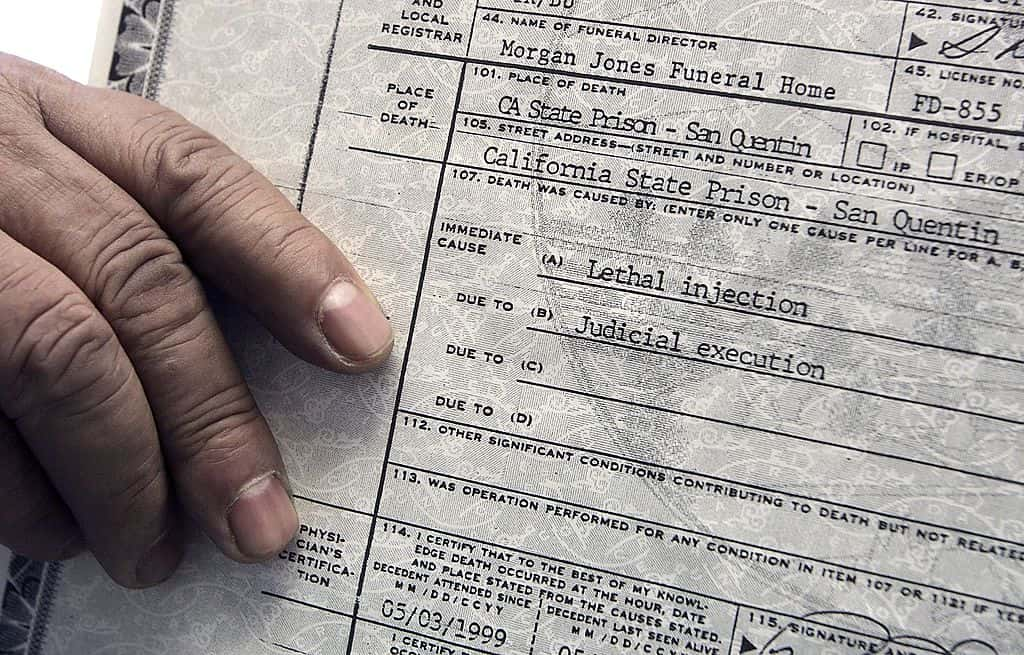 Getty Images
Getty Images
15. Counter Productive Executions
Though the South is responsible for the highest rate of executions in the United States, it hasn’t helped their crime rate. In fact, the region has the highest murder rate in the country, at 6.5 per 100,000 people (2016). The Northeast has the lowest rate of executions, with only four since 1976, and while also boasting the lowest rate of murder, at 3.5 per 100,000 (2016).
16. Wrong Country
There are 139 foreign citizens living their lives on death row in the United States. Of those 139, 91 of them come from countries which have abolished the death penalty.
17. Women’s Row
As of July 2017, there were 53 women on death row in the US, which accounts for less than 2% of the population of inmates, while “only” 16 women have been executed since 1976.
18. Retroactive Executions
New Mexico abolished the death penalty in 2009, but at the time, they still had two inmates on death row awaiting lethal injection. Both of them filed petitions claiming that their executions were unconstitutional and after 10 years, both of their death penalties were overturned. However, since the overturning of the death penalty was not retroactive, someone could still technically be executed if convicted for a crime that occurred before 2009.
19. Industrialized Executions
Of all of the industrialized countries in the world, only four still retain capital punishment: the US, Japan, Singapore, and Taiwan. The European Union holds positions strongly against it, with only Belarus actively executing people on the continent.
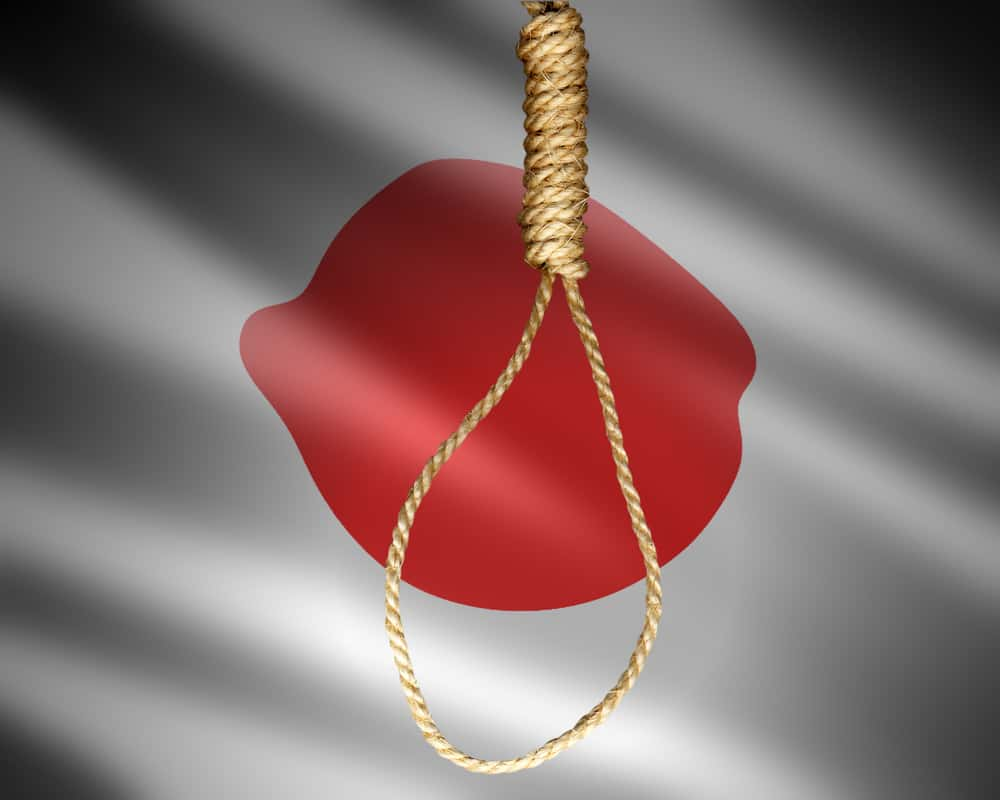 Shutterstock
Shutterstock
20. In the 21st Century
In South America and Oceania, no execution has been conducted in the 21st century, while in Russia, the last execution to take place on their territory was in 1999, in Chechnya. The last execution to take place in the Americas outside of the United States was in Saint Kitts and Nevis in 2008.
21. No Mas
The first country in the world to completely abolish the death penalty was Venezuela in 1863. However, Portugal was the first country to start banning the death penalty—they just did it in several steps. First, they abolished it for political crimes in 1852, then for all crimes outside of the military in 1867, before finally abolishing it completely in 1911 (though, to be fair, they brought back the death penalty in the military during WWI). The latest country to abolish the death penalty was Burkina Faso, in 2018.
22. World’s Percentage
In 2016, only four countries made up 87% of the executions worldwide: Iran, Saudi Arabia, Iraq, and Pakistan (China was not included because, again, they do not release their execution numbers).
23. The Innocence Project
In the United States, 153 people on death row have been exonerated since 1976, taking on average 11 years for them to receive their freedom after being falsely imprisoned. False testimony by an informant is the leading cause of wrongful convictions.
24. Brazen Bull
In Ancient Greece, a form of execution called the “brazen bull” was invented by Perillos of Athens and carried out by Phalaris, who was the tyrant of Sicily at the time. The device was a bronze cast replica of a bull, and prisoners would be locked inside of the body while a fire-roasted the bull’s belly. The mouth of the bull was then left open, this way onlookers could enjoy the screams of the person inside acoustically mimicking that of the real-life animal. Phalaris was a particularly cruel ruler, and he loved using the bull...but when his people rose up against him and had him executed, guess which method they chose?
25. Reconsider The Lobster
Cooking people alive sounds barbaric, but it hasn’t fully disappeared from the globe. It has been reported that the dictatorship regime of Uzbekistan, known for routinely violating human rights, still executes people by boiling them alive.
26. Torturing Wallace
The film Braveheart made the death of William Wallace one of the most famous executions in history. However, in keeping with the film's habit of ignoring historical accuracy, his execution was toned down due to its violent nature. After being captured, the real Wallace was hanged, but released while he was still alive. Then, he was eviscerated, various...sensitive parts of his body were removed, and he was chopped into four pieces. This practise, known as being hanged, drawn, and quartered, was standard for acts of treason against the English crown. To make things worse, this was all done while Wallace was still breathing. It wasn’t until he was chopped up that he was finally put out of his misery.
27. Mobile Capital Punishment
Not only does China keep their executions a secret, but they have mobilized them. Vans carrying an executioner and lethal injections have begun roaming around rural areas to carry out some of their many executions.
28. Reciprocation of Crime
The Code of Hammurabi, the first-ever written series of laws, was a common topic in many social studies classes, so many of you know about an “an eye for an eye.” Strangely enough though, murder wasn’t one of the 25 offenses which were punishable by death in Babylonia. You better not get caught stealing or letting your slave escape though...
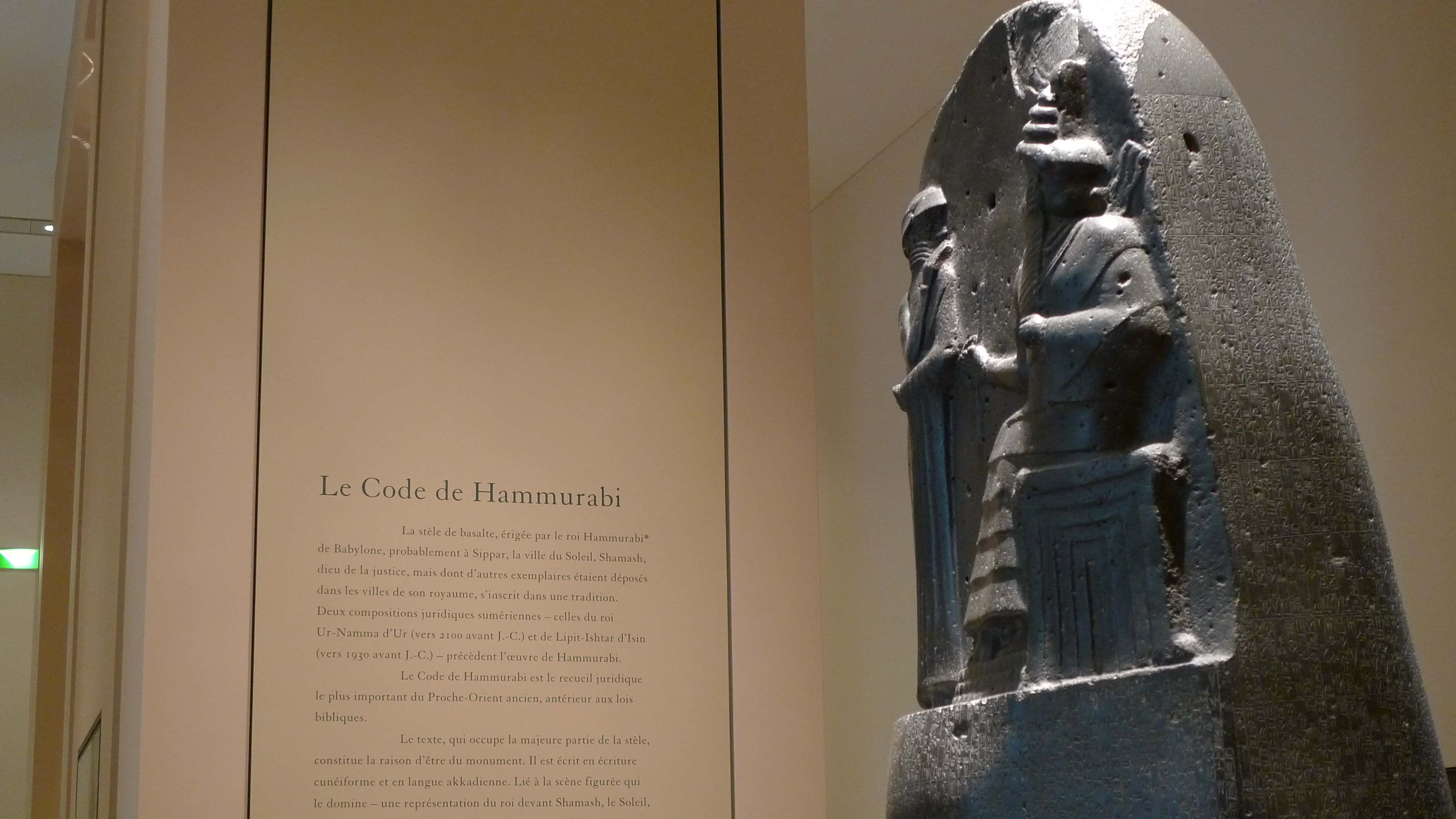 Wikimedia Commons, Chad and Steph
Wikimedia Commons, Chad and Steph
29. Still, Chopping Heads Off
France did not do away with the death penalty until 1981, which means that the guillotine was not only still in use until recently, but it remained the country’s standard method of judicial execution for centuries. The last beheading by guillotine in the country which made it famous was in 1977 when Hamida Djandoubi was beheaded for the kidnap and murder of his ex-girlfriend. To put it in perspective, Star Wars was released before France's last use of the guillotine.
30. Heavy Hanging
After shooting two bank tellers dead during a bank robbery, Mitchell Rupe was sentenced to the death penalty by hanging. The only issue was that Rupe was over 400 pounds. He argued that this sentence was a form of cruel and unusual punishment, as he was too heavy to be hung properly. After many court proceedings, he was finally spared and given life in prison. He died in 2006 from liver disease. Yes, this happened that recently.
31. Last Time To Dine
Last meals are often romanticized, however, if you’re a prisoner in the United States, you have a limit of only $40. This is set in place to prevent the ordering of grand meals. To be fair, it doesn’t seem like the inmates are that desperate to go all out; the most common meal is a cheeseburger and fries.
32. Cats Own You
Death row prisoners are surprisingly sometimes allowed a pet cat in the United States. However, anyone that’s ever had a cat knows that they are not your pet, but rather you are theirs.
33. Kids
Amazingly, juveniles weren’t spared from being sentenced to death in the United States until 2005. The last minor to be murdered judicially was Leonard Shockley, in 1959 at the age of 17, by gas chamber. He was convicted after the murder a shopkeeper during a robbery in Maryland. The last person to be put to death for a crime committed while they were a minor was Scott Allen Hain in 2003. He was executed when he was 32 years old after 15 years on death row.
34. Botched Job
In 1983, Jimmy Lee Gray was executed in a gas chamber for his murder of a three-year-old girl. He committed this atrocity while out on parole for the murder of a 16-year-old girl. When it was time for the execution to take place, the executioner was drunk and botched the killing, which went on before eight minutes before officials cleared the viewing room while Gray was banging his head against a metal pole.
 Wikimedia Commons, Shelka04
Wikimedia Commons, Shelka04
35. Biblical Proportions
In Saudi Arabia, a man is set to be executed by a method which many may find quite archaic: crucifixion. Ali Mohammed Baqir al-Nimr was 17 years old when he was arrested for protesting during the Arab Spring, and he was convicted after being forced to confess during extreme interrogation. Crucifixion isn’t all though, as the actual sentencing calls for a beheading to be carried out first.
36. Racial Bias
In the United States, 96% of the states display a pattern of racial discrimination in regards to the sentencing of the death penalty. A black defendant is three times more likely to receive the death penalty than a white defendant in many states. Also, in many states, a defendant is also three times more likely to be sentenced to death if the victim was white.
37. Skewed Executions
While only making up 13% of the population in the country, black inmates account for 42% of death row inmates.
38. Watching the Guillotine
Performing an execution by guillotine was a major event in France, and during the Reign of Terror, thousands would come out to watch the executions. Much like modern sporting events, there was a culture around it and a fandom developed. You could even buy novelty guillotines to display at home and toy ones for your children to play with.
39. Not In My Name
The guillotine was proposed by one Dr. Joseph-Ignace Guillotin, who sought to develop a more humane way to execute people. However, it may surprise you to learn that he was opposed to capital punishment in general. He wanted to make sure that prisoners being executed did not have to suffer more than necessary. This led to him uttering the rather infamous line, "Now, with my machine, I cut off your head in the twinkling of an eye, and you never feel it!" He meant this to sound like a good thing, but well...not quite. When the machine took off in popularity, it took on his name, a fact which horrified the doctor. He and his family petitioned to have the name changed for years, but to no avail.
40. Family Business
What the Manning family is to the National Football League, the Sanson family was to the guillotine in France. From 1684 to 1847, official executions in France were performed by one family: the Sansons. The most famous of all was Charles-Henri Sanson, who was the royal executioner and then High Executioner for 40 years. Serving for King Louis XVI, he eventually was responsible for the death of the King himself. That execution didn’t go so smoothly, and repeated dropping of the blades were necessary before Louis was dead. All in all, Sanson executed over 3,000 people during his career.
41. Apple Doesn’t Fall Far
Just two years later it, was Charles-Henri’s son Henri’s turn to kill a royal family member, Marie Antoinette. Henri would go on to perform executions on revolutionaries through his career, including Robespierre and Saint-Just.
42. Point Taken
According to legend, it was Louis XVI himself who suggested that a triangular blade would upgrade the guillotine into a more efficient killing machine. Eventually, he would get to test it for himself. Thanks, Louis!
43. Many Met The Blade
During the French Revolution alone, over 40,000 people were killed with the guillotine. It is difficult to estimate the total number of people killed by the famous device, but it is easily in the hundreds of thousands.
44. Only King
Charles I was the only king in English history to be executed, but Parliament had to jump through many hoops to get it done. After the Second English Civil War, which Charles helped plot while in prison, all three chief justices of England's common law courts ruled that his detainment due to the claim of treason was unlawful. In response, Parliament made a bill specifically for Charles I, where they had a separate court created to try him while declaring that this particular bill did not need royal authority to be passed. You have to admit, it probably is hard to get royal authority to pass a regicide bill.
45. Femme Fatale
Mata Hari was a famous courtesan, dancer, and spy in the early days of the 20th century. She spied for the Germans during WWI, but after providing unsatisfactory information (most of her intel was simply gossip about the sex lives of French generals), they decided to expose her as a spy to the French. After confirming these suspicions, the French arrested Mata Hari and sentenced her to death.
46. A Kiss To The Executioner
Mata Hari’s execution took place on October 15, 1917. According to the testimony of journalist Henry Wales, Hari refused to be blindfolded as she faced the firing squad who were about to take her life. She did not flinch as the soldiers opened fire, and even after she’d been struck, her face did not change expression. Unfortunately, for those who want a juicier story, Wales doesn’t mention anything about her supposedly stripping down to her birthday suit to persuade the soldiers not to shoot her (as some sources have stated she did). She did, however, blow a kiss to her executioners in her final moments.
47. Thousand Days of Anne
One of the most famous executions in history was that of Anne Boleyn, who was at the time the Queen of England. After three failed pregnancies and only one daughter—who turned out to be the game-changing Elizabeth I—Henry VIII was on to the next one. So how did he get her arrested? Well, she was tried for treason, incest, and adultery on the fabricated grounds that she had sexual affairs with many different men, including her brother, and planned to murder the king in order to wed Sir Henry Norris.
48. What a Guy
Anne Boleyn was the first queen to be publicly executed, and in fact, her own uncle was on the jury that sentenced her to her death. Henry may have been ruthless when it came to women, but he did step in at the last minute with the tiniest act of mercy possible: Instead of having her head chopped off by a crude ax, Henry had an expert swordsman use his blade for the deed. Thanks, I guess?
49. Mock Trial
No fewer than seven men were accused of carrying out affairs with Anne Boleyn. Virtually all denied the allegations or confessed under torment. Those coerced confessions were enough to have Anne condemned to death for adultery, treason, and incest. Modern historians agree that the charges brought against Anne Boleyn that led to her execution were false and unconvincing, and that Henry had her killed just because she didn’t happen to have any male children, either.
50. Hail Mary
Anne Boleyn was sent to the infamous Tower of London upon being arrested. After four days in the tower, she bundled up a package and gave it to her jailer to deliver to the king. It was a letter; her very last to Henry. In it, she plead for mercy, writing that "never prince had wife more loyal in all duty, and in all true affection, than you have ever found in Anne Boleyn." She also begged him to think of their daughter Elizabeth—and made one final heartbreaking request. She humbly asked that Henry, if she was found guilty, would still spare the lives of her brother and the other men accused of being her lovers. It's a gut-wrenching revelation: at her core, Boleyn was truly selfless. Sadly, her plea didn't move the king. On May 17, Boleyn's brother George and the other accused men were executed.
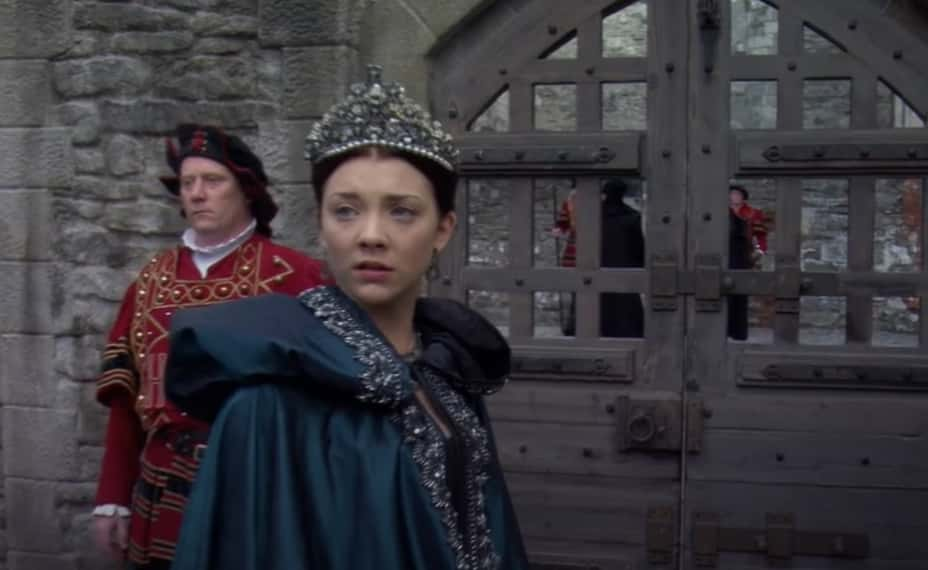 The Tudors (2007–2010), Showtime Networks
The Tudors (2007–2010), Showtime Networks
51. Is It Her?
Despite the careful planning that went into Anne Boleyn’s execution, little to no thought was given to what should be done with her remains afterward. Not having arranged for a coffin, her remains were allegedly put into an old arrow chest, and she and her brother were buried in an unmarked grave in front of the altar at the Church of St. Peter ad Vincula. In an interesting twist, it turned out that five other beheaded women had been buried under the altar, and it had simply been assumed that the bones found in an arrow chest there were Boleyn's. There is also a theory that her relatives had her body secretly reburied somewhere else, which, based on that discovery, might have been true. Without DNA testing, the truth will probably never be known.
52. It Runs in the Family
Catherine Howard was yet another of Henry VIII's wives who was executed. A cousin of Anne Boleyn, Catherine Howard was married to Henry VIII for little more than a year before her death. Like her cousin before her, Catherine Howard was sentenced to death and beheaded, this time for her alleged affair with a man named Thomas Culpeper.
53. No Regrets
Despite what folklore—and shows like The Tudors—have to say about Catherine Howard’s final words, there is no evidence that she ever said, “I die a Queen, but I would rather have died the wife of Culpeper” on the chopping block. While it’s fun to imagine Catherine using her last moments to snub her scary husband, it’s a myth. In reality, she stuck to the traditional words about mercy and deserving “to die a thousand deaths” for betraying a king who always treated her so “graciously.” She was about 19 years old.
54. Killing King
Henry VIII didn’t just have his wives executed, no no. Over his reign, he had roughly 72,000 people put to death.
55. Flat as a Pancake
One of Henry VIII’s more gruesome ways of executing people was a method called "pressing," which essentially is crushing someone to death. A large plank was held over the body of the prisoner, with weight being steadily added until they could no longer breathe. This was a long and drawn-out way of killing someone. To make it worse, the weights were added slowly to ensure maximum suffering.
56. Forgive Us!
According to eyewitness accounts of Mary, Queen of Scots' beheading, the two men charged with her execution followed the custom of asking their victim for her forgiveness, to which she responded, “I forgive you with all my heart, for now, I hope, you shall make an end of all my troubles.”
 Mary Queen of Scots (2018), Focus Features
Mary Queen of Scots (2018), Focus Features
57. Poor Execution
Mary, Queen of Scots' execution wasn’t a clean one. When the executioner took his first swing, he missed and hit her in the back of the head. He swung again, but the head hung on. Finally, on the third swing, he managed to get the job done, but the humiliation wasn't over: He reportedly held the head up by its tresses and said, "God save the Queen." The only problem was that Mary had been wearing a wig. The head toppled to the ground, revealing short grey hair. One eyewitness account also added that Mary's lips kept moving in the minutes after her beheading.
 Mary Queen of Scots (2018), Focus Features
Mary Queen of Scots (2018), Focus Features
58. Queen’s Best Friend
Mary’s dog, a Maltese terrier, remained loyal to her through the execution, and the executioner later discovered him hiding under her dress. No matter how hard he tried to chase him off, the dog refused to leave his mistress and reportedly lay down in a puddle of her blood.
59. The Death of the Tsar
Shortly after midnight, on July 17, 1918, the Imperial Romanov Family of Russia was brought to the cellar of the house where they were being kept captive, under the pretext of protection from approaching Bolshevik mobs. The Romanovs entered the cellar, followed immediately by a squad of gunmen. The Romanovs, their doctor, and three servants were executed. Tsar Nicholas II’s last words were, “You know not what you do!”
60. Blood Diamonds
Nicholas died almost instantly from his wounds. His daughters were not so lucky: their dresses, lined with secreted diamonds and jewels, deflected the executioners’ bullets. So, instead, the executioners turned on them with bayonets, then finally shot in the head.
Sources: 1, 2, 3, 4, 5, 6, 7, 8, 9, 10, 11, 12, 13, 14, 15, 16, 17, 18, 19, 20, 21, 22, 23, 24, 25, 26, 27, 28, 29

